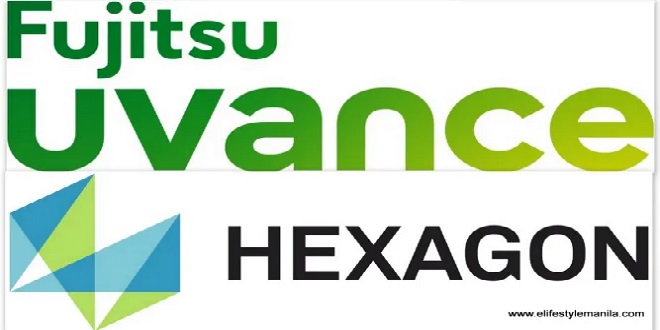
Hexagon’s Safety, Infrastructure & Geospatial division and Fujitsu Limited have joined forces to embark on the collaborative development of digital twin applications geared towards predicting and mitigating both natural disasters and traffic accidents. These groundbreaking solutions are a testament to the ongoing dedication of both companies in realizing the vision of fortified, disaster-resistant cities, a pursuit that was solidified through their business partnership established in June 2022.
With a focus on disaster prevention and mitigation, the collaborative effort is giving rise to a predictive model designed to calculate the potential extent and impact of flooding based on precipitation data. This model not only visualizes the potential scope of flooding but also conducts comprehensive damage prediction analysis. The insights gleaned from this analysis equip cities with the necessary tools to formulate effective disaster response plans, thus bolstering resilience.
In the realm of traffic safety, the combined efforts of Hexagon and Fujitsu have yielded an application that identifies areas where high traffic density and road design conspire to heighten the risk of accidents. Proposing strategic measures for enhancement, this application empowers urban planners and road administrators to craft transportation networks that are not only safer but also markedly more resilient.
The trajectory ahead sees Fujitsu and Hexagon engaging in field trials alongside clients from administrative, municipal, and transportation sectors. These trials aim to catalyze urban environmental optimization and inform decision-making processes. The ultimate goal is to roll out these innovative solutions on a global scale, with plans for global availability by the conclusion of fiscal year 2023, ending in March 2024.
Use case 1: Protecting cities and regions from natural disasters


In an era marked by escalating unpredictability, the imperative to orchestrate and render data across diverse domains like healthcare, transportation, energy, and the environment assumes paramount importance. This orchestration is a crucial step toward safeguarding both individuals and critical social infrastructure from the multifaceted threats posed by natural disasters and other emergent dangers. Harnessing the robust capabilities of Fujitsu’s Computing as a Service (CaaS) platform—bestowed with a spectrum of user-friendly services, underpinned by Fujitsu’s pioneering computing and software technologies—alongside Hexagon’s M.App Enterprise real-time geospatial application, the partnership aims to leverage the potential of ‘digital rehearsal’ technology (Note 1). This innovative approach entails preemptive analysis and validation of disaster risks and optimal preparedness strategies on a digital twin mirroring real-world scenarios with meticulous precision.
The amalgamated solution harnesses flood forecasting models and precipitation data to execute intricate computations and visually manifest flooding occurrences. Beyond this, the collaboration addresses an array of challenges and applications across industries such as medical, financial, public services, and distribution. Notable applications encompass damage anticipation for critical infrastructure, development of effective disaster response blueprints, and estimation of potential damage magnitudes. Moreover, the solution extends its impact to secure evacuation pathways and bolster infrastructure protection, particularly in the face of erratic weather patterns and natural calamities. This is facilitated through the assimilation of weather Internet of Things (IoT) sensors and weather prediction services that diligently monitor factors like temperature and precipitation.
Through this convergence of cutting-edge technologies, Fujitsu and Hexagon endeavor to forge a shield of resilience against the uncertainties of our contemporary world, pre-emptively arming communities and infrastructures to confront adversity with precision and foresight.
(Note 1: ‘Digital rehearsal’ technology refers to the simulation and validation of scenarios in a digital environment before they unfold in the real world.)
Use case 2: Contributing to the reduction of traffic accidents

As per a comprehensive study report unveiled by the World Health Organization (WHO) in 2022, an alarming toll of 1.35 million lives are claimed annually due to traffic accidents, while a staggering 50 million individuals grapple with severe injuries. These tragic incidents are often precipitated by factors like excessive speed, deficient road guidance, and compromised road environments. Counteracting this distressing trend necessitates a strategic approach that involves visualizing accident-prone areas, scrutinizing the underlying causes, and formulating effective solutions.
In a collaborative stride that merges the prowess of Hexagon’s geospatial visualization tool, M. App Enterprise, with Fujitsu’s infrastructure services, a pioneering application has emerged. This innovative solution serves to visualize regions characterized by elevated instances of traffic accidents, analyze variables such as traffic volumes, road design, and signage, and subsequently provide actionable recommendations in line with the International Road Assessment Program’s (iRAP) Road Safety Toolkit (Note 2).
For instance, in locales where accident recurrence remains high despite relatively lower traffic volume, a gamut of enhancement strategies are presented. These encompass speed management, installation of alert signage, and demarcation of pedestrian-vehicle pathways through the deployment of guardrails—rendering a comprehensive yet cost-effective resolution. These meticulously tailored propositions cater to city planners, road administrators, local governing bodies, and consulting services alike, underscoring their collective contribution towards curbing traffic accidents and nurturing secure, harmonious communities.
Mladen Stojic, the President of Government, Transportation, Defense, and Security for Hexagon’s Safety, Infrastructure & Geospatial division, underscored the tangible fruits of the partnership with Fujitsu in shaping cities’ trajectories. “Our collaboration with Fujitsu remains a source of immense pride for Hexagon, as it empowers cities to reclaim control over their destinies,” remarked Stojic. “Through our concerted efforts to monitor and mitigate factors with detrimental impacts on society—ranging from pollution to traffic congestion and flooding—our alliance is actively fostering urban environments that are not only sustainable but also profoundly livable.”
Yoshinami Takahashi, Senior Executive Vice President and Head of Global Business Solutions at Fujitsu Limited, echoed the sentiments of progress resulting from the Hexagon partnership. “The strides we have taken in partnership with Hexagon mark a significant leap towards realizing Fujitsu’s vision of a Trusted Society through Fujitsu Uvance,” said Takahashi. This visionary global initiative encapsulates the concept of “sustainability transformation,” leveraging the collective strengths of both entities to tackle intricate societal challenges that transcend conventional solutions.







